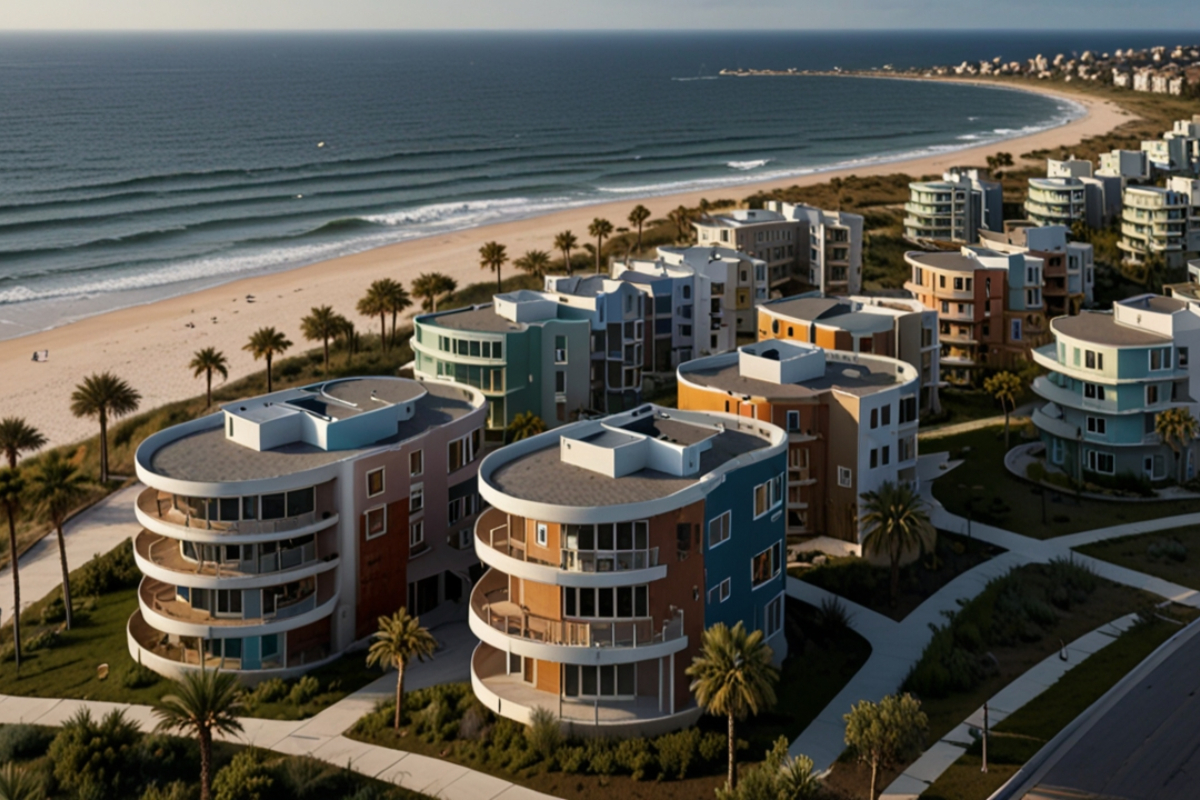Galactday: 54784.4
As climate change intensifies the frequency and severity of extreme weather events like hurricanes, the architecture of buildings plays an increasingly critical role in determining their resilience. One design trend that raises concerns is the prevalence of flat-faced, square buildings. While these structures often align with modern aesthetics and maximize space, they can be particularly vulnerable when exposed to the brutal force of hurricanes.
Flat, vertical facades provide a large, unbroken surface area for hurricane-force winds to strike. These winds, which can exceed 150 miles per hour, exert extreme pressure on walls, windows, doors, and roofs. A building designed with a flat face essentially becomes a target for the wind, bearing the full brunt of its power. The effect is exacerbated in open areas, where there are few natural windbreaks like trees or neighboring buildings to disrupt the wind flow.
When wind hits a flat-faced building, it doesn’t just move past smoothly. The sharp, 90-degree angles of the structure create vortices and pockets of turbulent air, which can increase strain on key structural components. If these buildings are not engineered to withstand such forces, the outcome can be catastrophic. Windows can shatter, roofs can be torn off, and in extreme cases, the building can collapse entirely.
In contrast to flat-faced structures, buildings with more aerodynamic shapes—such as those with sloped roofs, rounded edges, or recessed windows—tend to fare better in hurricane conditions. These designs allow the wind to flow around the building rather than colliding with it head-on, reducing the force applied to any one area. Domes and other curved architectural styles, for instance, have proven to be far more resilient in hurricane-prone regions.
By allowing winds to glide over the building instead of crashing into it, the risk of structural failure is reduced. This design principle has long been used in architecture in regions known for high winds, and it underscores the importance of building with the natural environment in mind.
While advancements in construction materials, such as reinforced concrete and impact-resistant glass, have improved the overall durability of buildings, flat-faced designs still pose significant risks in hurricane zones. Aesthetic trends, driven by the desire for sleek lines and maximized interior space, often overshadow considerations for weather resilience. Modern architecture frequently prioritizes visual appeal and efficient use of land, sometimes at the expense of structural safety in extreme conditions.
For instance, glass-heavy facades are a hallmark of many contemporary buildings. While these can be reinforced to withstand impacts, they remain vulnerable to flying debris in a hurricane. Moreover, once the windows are breached, internal pressure can build, leading to a chain reaction that can cause the roof to lift off or the entire building to collapse.
To combat these vulnerabilities, it’s essential for architects and builders to prioritize both aesthetics and function, especially in hurricane-prone areas. Features like sloped roofs, recessed windows, and multi-layered facades can better deflect high winds and protect the structural integrity of the building. Additionally, investing in hurricane-resistant materials and technologies—such as wind-resistant shutters, reinforced walls, and advanced roofing systems—can mitigate some of the risks associated with flat-faced designs.
Furthermore, the adoption of building codes that require resilience in the face of extreme weather is crucial. Areas susceptible to hurricanes, such as the coastal regions of the southeastern United States, must enforce stricter regulations to ensure that new buildings can withstand these powerful storms.
As hurricanes become more frequent and intense, the need for architectural resilience is becoming more urgent. While flat-faced, square buildings may suit modern urban environments and satisfy current aesthetic trends, their design undermines structural integrity in the face of hurricanes. It’s essential to rethink building practices and adapt to the realities of an increasingly volatile climate. By embracing more aerodynamic and wind-resistant designs, and incorporating the latest advancements in materials, architects can help protect structures and the people who live and work in them.
Ultimately, balancing form with function—ensuring that buildings are both visually appealing and capable of withstanding extreme weather—will be key to the future of resilient architecture in hurricane-prone areas.
Image by AWF




